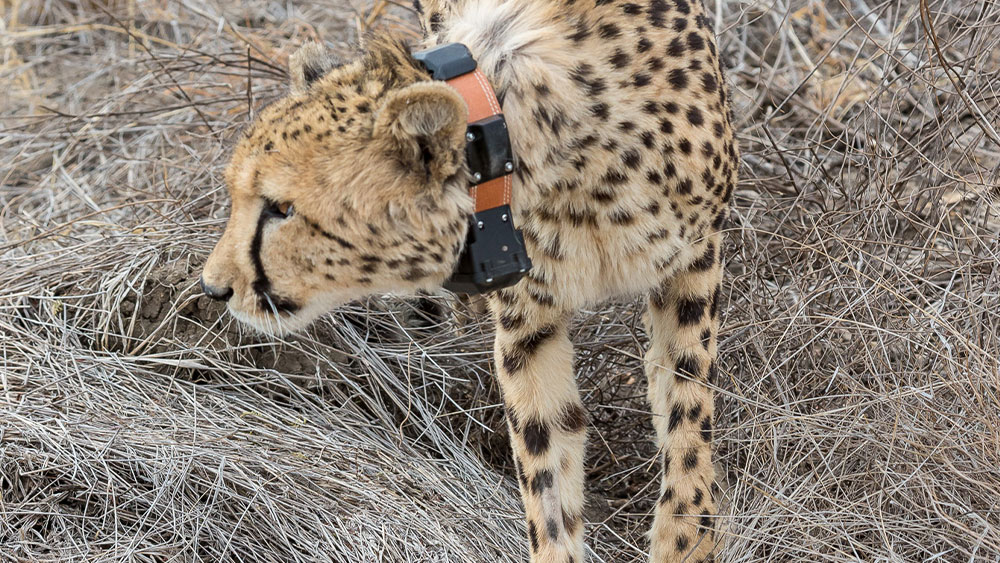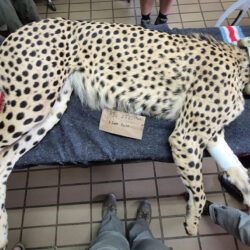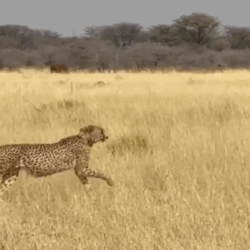Returning Orphaned Cheetahs to the Wild – What We’ve Learned
-

- by Brandy Morenko Campbell February 16, 2022

Article Summary of Recommendations for the rehabilitation and release of wild-born, captive-raised cheetah: the importance of pre- and post-release management for optimising survival
Authors: Eli H. Walker, Stijn Verschueren, Anne Schmidt-Küntzel, and Laurie Marker.
Over 75% of the global cheetah range covers unprotected lands, where the cheetah’s survival is threatened by habitat loss and human persecution. The Cheetah Conservation Fund (CCF) rescues cheetahs that were orphaned due to human-wildlife conflict and present these individuals the opportunity to transition back into the wild. With only 7,100 adult and adolescent cheetahs remaining in 9% of their historic range, the rehabilitation and release of orphaned wild individuals could mitigate the pressure on already vulnerable wild populations.
Understanding which factors improve post-release survival of wild-born, captive-raised cheetahs is critical to justify and optimize this approach. CCF has evaluated their methodological framework for the releases of 36 orphaned cheetahs between 2004 and 2018 and recently published these findings in Oryx.
The study showed high success rates of release candidates in achieving independence (75-96%). Released individuals settled quickly into a behavioral routine expected of a wild cheetah and survival estimates were similar to wild counterparts. Moreover, there was evidence of successful reproductive events, the ultimate measure of release success. Through many years of researching various release strategies, CCF researchers have found that with careful selection of release candidates and release sites, and extraordinarily close monitoring before and after release, cheetahs can learn and utilize the survival skills they need to be returned to the wild and live normal cheetah lives. The value and success rates of returning wild-born captive carnivores back to their natural habitats has been debated for decades, but CCF has put enormous efforts into optimizing post-release survival, so they can contribute invaluable genetics to support their fragile populations and live the wild lives they were meant to live. CCF has shown the world that it can be done and hopes that others follow their lead.

CCF has learned that careful selection of orphan cheetah candidates is critical in their ability to be successfully reintroduced to the wild. Individuals orphaned at age greater than 6 months have spent more time with their mother learning important cheetah survival strategies and may improve survival. Younger cubs, if purposefully bonded with an older partner to form a coalition, can also be successful. Release candidates must have an appropriate response to humans to allow for close monitoring and care while they go through the release process, but not so comfortable that they lose fear of humans, become dependent, or find themselves in conflict with humans.
To prepare for release, CCF has determined that cheetahs must be at least two and a half years of age. They are exercised daily and introduced to carcasses of natural prey to adjust them to hunting and eating their own catches. CCF has found that pre-release hunting training under close supervision may help to evaluate and exclude candidates that show questionable hunting skills.
Another critical component to successfully releasing rehabilitated cheetahs is the identification of suitable habitat with enough prey and year-round water supply. Intimate knowledge of pre-existing cheetah populations could be key to ensuring potential release sites contain an ecosystem that allows for the addition of another cheetah and its ecological needs.
Once release preparations are completed, the rehabilitated individuals are ready to be released. Released individuals are GPS/VHF radio collared, which allows CCF researchers to locate individuals on a daily basis. This allows for closely monitoring of health and to ensure natural survival. CCF has found that most animals will gain their full independence and hunt successfully within two weeks. While these cheetahs-in-training are honing their skills, they do often require a few supplemental feedings to get them through. This is another reason that keeping a close eye on newly released animals is so important, especially until they have successfully hunted several times.
CCF’s work in wild-born rehabilitation and release methods is not done. The research continues as CCF researches follow each of these individual animals in hopes of learning every detail about their lives, their offspring, the challenges and risks they face, and even their deaths. Every piece of information gained is and can be used to find ways to give each orphaned cheetah the best chance for success at having a wild future, so they can all contribute to a future world where healthy wild cheetahs roam.
Related Reading
-
November 24, 2025
Tupuka’s Wild Life



